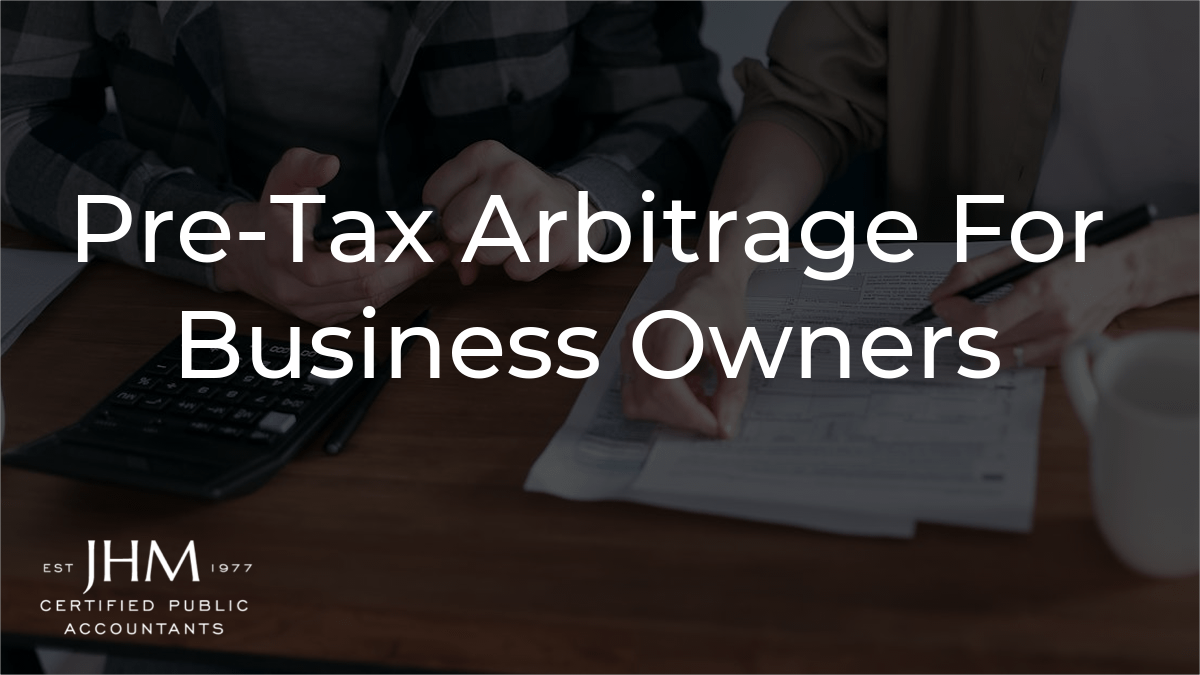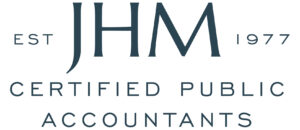
High-income business owners face a unique challenge: their personal and business finances are deeply intertwined, and taxes often feel like the single largest expense both personally and for the business. While most people think of tax savings in terms of deductions, business owners have opportunities to spend pre-tax dollars by structuring expenses through their entities.
It’s important to note that some strategies are pure pre-tax opportunities, where dollars never touch taxable income. Others are technically deductions, but when routed through a business structure, they function much like pre-tax spending. The real difference isn’t just classification; it’s timing and intent. Owners who plan ahead can position their spending to capture the maximum tax benefit. Those who wait until year-end to see “what can be written off” are usually too late.
This is a concept referred to as pre-tax arbitrage, and it’s about intentionally structuring your spending to convert what would normally be after-tax personal expenses into pre-tax benefits. When done consistently, this doesn’t just reduce a tax bill in the current year; it reshapes the cost of recurring expenses and compounds savings over time.
Some of the most effective strategies fall squarely within business planning: electing to pay state taxes at the entity level, reimbursing healthcare through a corporation, funding education as a business benefit, or contributing to retirement plans where the dollars are deductible to the company and pre-tax to the participant. Each strategy stands on its own, but together they can create six-figure annual savings for high earners.
PTET: converting state taxes into business deductions
For years, one of the most frustrating limits for high earners has been the federal cap on state and local tax (SALT) deductions. Even business owners with significant state tax liabilities were limited to deducting just $10,000 at the individual level.
The One Big Beautiful Bill Act (OBBBA), enacted in July 2025, raised that cap to $40,000 through 2029. On the surface, that’s good news. But for many high-income business owners, $40,000 still falls well short of actual state tax obligations, and the cap begins phasing out once income passes $500,000. By 2030, the limit reverts back to $10,000.
That’s where the Pass-Through Entity Tax (PTET) election remains a powerful planning tool. PTET allows certain businesses, like partnerships and S corporations, to pay state income taxes at the entity level. Because the payment is made by the business, it’s treated as a fully deductible business expense on the federal return, bypassing the individual SALT cap entirely.
For a high-income partner in a state like California or New York, this election can mean deducting tens or even hundreds of thousands in state tax payments that would otherwise have been nondeductible. Even with the OBBBA’s temporary SALT relief, PTET elections can provide more consistent, higher-value savings, especially for owners whose income exceeds the new phaseout thresholds.
However, PTET election windows, owner eligibility, credit mechanics, and estimated payment timing differ by state. Modeling needs to happen before the election deadline and with full owner-by-owner analysis to avoid cash-flow surprises. The key takeaway is that planning ahead is necessary, but, in doing so, you may be able to shift how state taxes are paid to the tune of considerable savings.
Healthcare through the business
Healthcare is one of the most significant recurring expenses for families, which makes it an obvious target for pre-tax arbitrage. For business owners, entity type determines how much flexibility you have in covering these costs with pre-tax dollars.
-
Self-Employed/Partnerships: Health insurance premiums are generally deductible above the line. This helps, but out-of-pocket costs are still typically after-tax.
-
C Corporations: C corps offer the broadest planning opportunities. By establishing a Health Reimbursement Arrangement (HRA), the business can reimburse medical expenses for the owner, spouse, and dependents. What would otherwise be a personal cost becomes a deductible business expense.
-
S Corporations: Owners holding more than 2% of an S corp face limitations. They can deduct premiums, but cannot receive pre-tax benefits through cafeteria plans or HRAs in the same way as C corp owners. Still, premiums alone are a meaningful deduction.
-
Section 125 Cafeteria Plans: For businesses with employees, cafeteria plans allow staff to pay health, dental, vision, and dependent care expenses with pre-tax dollars. The business benefits, too, by reducing payroll taxes.
The point is not just that healthcare costs can be deducted, but that the right business structure determines how far you can push those dollars into the pre-tax category. A C-corp owner with a well-designed HRA could turn $20,000 in family medical expenses into a fully deductible cost of doing business. Yet, these benefits are not plug-and-play. You need the right plan documents, adoption dates, and may need nondiscrimination testing for certain types of benefits.
Education funding as a business benefit
Education is another area where business structures create unique opportunities. Under Section 127 of the Internal Revenue Code, employers can provide up to $5,250 per year in tax-free educational assistance per employee, and the business gets a deduction for the expense. The OBBBA expanded this benefit by making permanent the ability for employers to apply the same $5,250 toward student loan repayments.
A properly documented, nondiscriminatory Section 127 plan can provide up to the annual limit tax-free to employees and certain owners, provided no more than 5% of total benefits go to >5% owners (and their spouses/dependents).
Like the other pre-tax strategies we’ve discussed, a Section 127 plan requires a written program, eligibility terms, nondiscrimination testing, and coordination with other benefits. It must be established before benefits are provided because you can’t “re-label” wages after year-end.
Retirement plans as pre-tax engines
Retirement plans are often discussed as personal savings vehicles, but for business owners, they’re also a way to convert compensation into deductible business spending.
-
Defined Contribution Plans: Traditional 401(k)s and profit-sharing plans allow owners to defer income, lowering both personal taxable income and the company’s taxable profit.
-
Cash Balance and Defined Benefit Plans: For high-income owners, these advanced plans allow six-figure contributions that are deductible to the business and pre-tax to the participant. They are especially powerful for professional practices or closely held businesses with predictable cash flow.
This creates immediate arbitrage: saving on taxes today, then withdrawing funds years later, often at much lower effective rates. Retirement contributions also integrate with other strategies like Roth conversions in low-income years, or charitable planning through Qualified Charitable Distributions (QCDs).
Putting it all together
Individually, each of these strategies delivers measurable savings. Together, they can transform how a business owner manages both taxes and wealth.
For illustration only, consider a professional services firm organized as an S corporation reporting $1.2 million in annual income. The owners elect PTET, shifting $80,000 of state income tax from nondeductible to deductible at the business level. A defined benefit plan, designed by an actuary, enables approximately $150,000 in owner contributions, deductible to the business and pre-tax for the participants.
In total, these deductions and pre-tax spending reach about $230,000. The actual federal tax reduction equals the marginal rates those dollars span on your return, plus any state-level effects.
This is, of course, a simplified scenario. Every business has unique variables that determine what’s possible. And, many strategies require thorough documentation, compliance, and testing. But the principle holds true: layering pre-tax strategies through the business can reduce taxable income by tens or even hundreds of thousands annually, creating efficiency today and compounding benefits over time.
Making every dollar work harder
These strategies aren’t about cutting back. They’re about structuring your business and personal finances so every dollar works harder. For business owners, that’s where the real advantage lies.
The key is timing. Pre-tax arbitrage doesn’t happen at year-end when the return is filed. It requires proactive design, implemented throughout the year, often in collaboration with your advisor.
If you’re wondering how these opportunities apply to your situation, please reach out to us at jhmcpa.com. Together, we can identify where your business structure can be leveraged to capture efficiencies, reduce unnecessary tax exposure, and position your wealth for maximum long-term impact.
Get In Touch
Let’s Talk
Call us at (423) 756-0056 or fill out the form below and we’ll contact you to discuss your specific situation.
